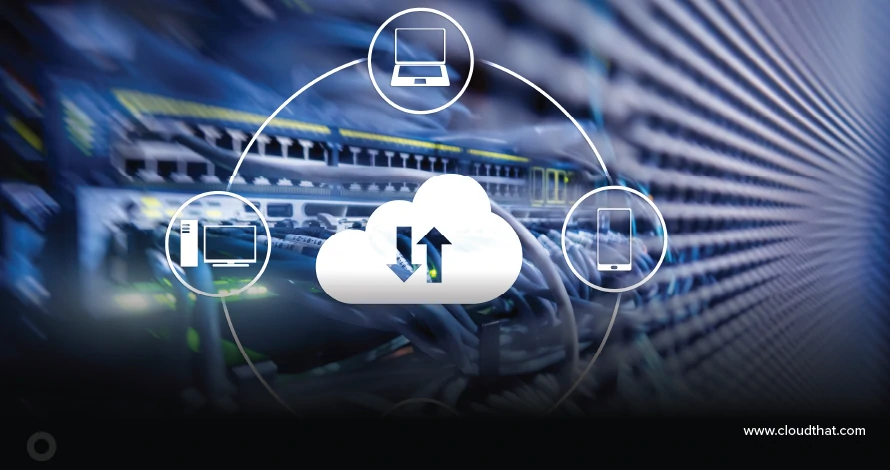|
Voiced by Amazon Polly |
Introduction
Generative AI represents a major breakthrough in artificial intelligence capabilities. Powered by deep learning techniques, generative AI models can produce novel, high-quality outputs like text, images, audio, and video. Unlike previous AI systems focused on classification and predictions, generative AI can create brand new artifacts that are often indistinguishable from human-created content.
Some prominent examples of generative AI include:
– Text generators like GPT-3.5 that can write coherent essays, stories, and code based on text prompts
– Image generators like DALL-E 2 that create photorealistic images from text descriptions
– Voice synthesis models that clone anyone’s voice or generate realistic speech
– Video generation systems that produce fake but believable video footage
The training datasets for these models encompass vast troves of text, images, audio, and video created by humans. By learning the patterns in the training data, the models can produce creative new outputs that capture intricate characteristics of human expression and cognition. While concerns exist around fake media and responsible use, generative AI also enables new applications in art, media, gaming, customer service, and more.
When combined with the scalable computing infrastructure of the cloud, generative AI offers tremendous potential for businesses to deploy these AI capabilities. Cloud platforms like Amazon Web Services, Microsoft Azure, and Google Cloud provide vast on-demand computing resources ideal for training and running state-of-the-art generative AI systems.
Next, we’ll explore the key benefits businesses can realize by leveraging generative AI with cloud computing.
Cost Savings
Generative AI models require massive amounts of compute power. According to OpenAI, their GPT-3 model cost around $12 million to train! Running these complex models can also be very expensive. Cloud computing allows businesses to leverage the scale of cloud providers to significantly reduce these costs.
Instead of having to purchase and maintain their own high-powered servers and infrastructure, businesses can pay for just the compute resources they need through the cloud. This saves enormously on upfront capital expenditures. It also saves on ongoing operating costs like energy, cooling, and IT staff.
With cloud offerings like AWS, Azure, and GCP, businesses can spin up and spin down compute resources on demand. So they don’t pay for idle capacity when the generative AI model is not in use. The cloud providers can also negotiate lower hardware prices based on the scale of their operations. These savings get passed down to customers.
The auto-scaling capabilities of the cloud are especially useful for generative AI workloads which can be very spiky. When demand rises, the system can automatically allocate more resources to handle it. When demand falls, it can free up those resources. This optimized utilization results in big cost savings compared to on-prem infrastructure which would need excess capacity to handle peak loads.
Hence, leveraging the cloud for generative AI allows businesses to train and run even the largest models in a much more cost-efficient manner. The savings from reduced compute costs is one of the biggest reasons for businesses to take their generative AI workloads to the cloud.
Helping organizations transform their IT infrastructure with top-notch Cloud Computing services
- Cloud Migration
- Devops
- AIML & IoT
Faster Deployment
One of the biggest benefits of leveraging the cloud for generative AI is the ability to deploy models faster. With cloud computing, businesses can instantly access powerful GPUs and computing resources to train AI models in hours or days rather than weeks or months.
Rather than purchasing and configuring local GPU servers, companies can spin up cloud-based GPU instances on demand. Leading cloud providers like AWS, GCP, and Azure offer GPU instances that make training large AI models fast and efficient. Some even provide pre-configured machine learning environments to accelerate deployment.
The ability to quickly train models enables more rapid iteration and experimentation. Data scientists can try different model architectures, tune hyperparameters, and evaluate results much faster. If a model isn’t performing well, they can quickly make adjustments and retrain.
Faster training also facilitates more frequent model updating and retraining. As new data comes in, models can be retrained overnight to keep them fresh and accurate. Without the long training times associated with local GPUs, models can adapt more rapidly.
For businesses looking to integrate generative AI, leveraging the cloud can significantly accelerate deployment. The key benefit is on-demand access to powerful, scalable GPU resources that allow models to be trained in a fraction of the time. This speed empowers data scientists to deliver AI innovations faster.
Scalability
Generative AI paired with cloud computing offers nearly unlimited scalability. Businesses can scale their generative AI usage up or down to meet demand easily.
For example, during a product launch or marketing campaign, traffic and demand for generative AI to create content may spike. With cloud-based generative AI, businesses can automatically spin up more servers and resources to handle the increased load. Once the campaign is over, these resources can be spun back down to save costs. There’s no need to purchase and maintain separate on-premise AI servers that would sit idle between peak usage times.
The flexibility of cloud infrastructure allows businesses to scale generative AI capabilities in real-time. Generative AI models continue learning and improving even at scale. Cloud service providers like CloudThat handle the undifferentiated heavy lifting of deploying and managing servers, networking, storage, and other infrastructure. This allows companies to focus on their core products and services instead of AI operations. With experience of more than 11 years, CloudThat has been a pioneer in helping businesses strategize, and execute their cloud strategy. By getting AWS AI competencies CloudThat has only become more enabled to change the face of businesses, letting businesses do what they do best while we take care of the rest!
Overall, the scalability of cloud-based generative AI delivers greater agility and reduces costs compared to on-premises solutions. Businesses can start small with generative AI then seamlessly scale up as needs grow over time. The elasticity and usage-based pricing of cloud services makes generative AI accessible and cost-effective for organizations of all sizes.
Unlocking New Applications
One of the most exciting developments enabled by generative AI and cloud computing is the creation of large language models. These advanced natural language processing systems can generate human-like text and engage in natural conversations. With the vast compute resources available via the cloud, companies like Anthropic, Cohere, and Anthropic have been able to develop and launch models like Claude, Cohere AI, and Anthropic AI.
Whereas previously these types of models were limited to research labs with access to expensive specialized hardware, now companies of any size can leverage them by tapping into cloud infrastructure. This is democratizing access to what were once cutting-edge capabilities.
Large language models powered by the cloud are being used for a wide variety of applications:
– Customer service chatbots that can engage in free-form natural conversations
– Automated support responses and FAQs
– AI writing assistants that can draft content like blog posts, social media captions, and marketing copy
– Automated summarization of documents and reports
– Sentiment analysis to understand customer feedback
– Predictive text generation to boost productivity
As these models grow more advanced, we will continue seeing new applications emerge across industries. The scalable power of cloud computing removes barriers to innovation with generative AI, allowing companies to experiment in entirely new ways.
Security
Cloud providers invest heavily in security and offer a high level of expertise, resources, and technology to fully secure infrastructure and data. This provides an advantage over on-premises solutions which may have limited budget and resources for optimal security.
Cloud services allow businesses to define granular access controls, permissions, and authentication mechanisms. Access can be granted on a temporary or limited basis, while real-time monitoring helps detect unauthorized behavior. Encryption protects data at rest and in transit. Businesses can leverage security best practices and controls implemented by the cloud provider, without needing to become security experts themselves.
Audits, certifications, and transparency reports validate the effectiveness of the cloud provider’s security practices. Leading cloud platforms undergo regular external audits and maintain global compliance certifications to assure customers their standards match the highest security requirements. Automated tools test for vulnerabilities on a continuous basis.
By leveraging the cloud, businesses can achieve enterprise-grade security and minimize risk at a lower cost than managing security in-house. The cloud provider’s dedicated security resources create economies of scale and 24/7 vigilance difficult for individual companies to match.
Reliability
The cloud offers high reliability for generative AI applications. Cloud providers invest heavily in infrastructure and have expertise in architecting highly available systems. They utilize multiple data centers in different geographic regions, allowing workloads to failover quickly if one region experiences an outage.
For mission critical generative AI workloads like real-time conversational systems, high availability architecture is essential. Cloud platforms make it easy to deploy AI across multiple availability zones to eliminate single points of failure. Load balancers distribute requests evenly and auto-scale capacity based on demand. Physical infrastructure is also redundantly configured, with redundant power, cooling, and networking built-in. Cloud providers conduct regular disaster recovery testing and have mature processes for dealing with incidents.
Generative AI models have strict uptime requirements because they directly impact customers and revenue. Downtime leads to lost opportunities and poor user experiences. The cloud’s reliability and resilience eliminates the risks associated with on-premises deployments. Businesses can launch AI confidently, knowing the cloud infrastructure will provide the uptime and availability they need even under peak loads.
Collaboration
Generative AI and cloud computing enable unprecedented levels of collaboration for organizations. Teams that are distributed across multiple geographic locations can now work together on AI projects in real time.
Cloud-based notebooks allow data scientists to share and synchronize both code and results seamlessly. This real-time collaboration enables faster iteration as teams build, train, and deploy AI models.
Platforms like Github allow developers to collaborate on code, while services like Google Docs enable collaborative writing and editing of documents. The cloud has unlocked collaboration capabilities that were impossible in the past.
The ability to collaborate on AI projects extends beyond employees within an organization. Partners, contractors, and crowdsourced talent can contribute meaningfully with the right cloud-based tools. Organizations can build a broader community to participate in developing impactful AI.
Ubiquitous access and centralized hosting of generative AI models in the cloud also enables collaboration across business units. Different teams can build applications on shared models, increasing synergies across an organization.
Simply put, the combination of generative AI and cloud computing is transforming collaboration for the better. Teams are no longer limited by legacy on-premises systems and can leverage the cloud’s natural support for real-time, distributed collaboration. This is accelerating innovation and bringing new AI applications to market faster than ever.
Cloud providers help to answer the question of Ethics in AI usage
AI generative models have faced criticism around potential harmful biases and outputs. When building and deploying these models on the cloud, businesses must be mindful of ethical AI practices.
Cloud providers like AWS, Google Cloud, and Microsoft Azure provide tools to help customers detect bias and build more fair, transparent, and accountable AI systems.
For example, AWS has launched Amazon SageMaker Clarify to analyze machine learning models for bias. It detects unwanted correlation or bias in training data to help data scientists build models that are fair and ethical.
Azure Machine Learning also offers capabilities to assess models for fairness. This allows organizations to analyze their models and mitigate any unintended bias before deployment.
Being on the cloud gives businesses easy access to these tools to better monitor their AI systems. Companies should leverage them and consult external AI ethics experts when appropriate.
Following ethical AI principles is crucial even as generative AI unlocks new opportunities. Businesses must responsibly weigh benefits and risks. Cloud-based tools can support them in deploying AI that is helpful, honest, and humble.
The Future: Limitless, and Unprecedented Advancement for the ones who choose to embrace GenAI TODAY!
The future of generative AI and cloud computing promises even more exciting developments as the technologies continue to advance rapidly. Here are some of the key areas we can expect to see significant progress in the years ahead:
More powerful AI models: Models like GPT-4 Turbo will keep improving, becoming capable of more complex language generation and reasoning. This will enable new use cases across all industries.
Increased personalization: Leveraging user data in the cloud, generative AI will be able to customize and tailor content and recommendations for each individual. Apps and services will feel more intuitive and intelligent.
Advanced creativity tools :We’re just scratching the surface of using AI to enhance human creativity in areas like writing, music, art, and more. Cloud-based AI creativity tools will become incredibly capable.
Expansion to more verticals: Sectors like healthcare, finance, transportation, and government have only begun to explore using generative AI. There’s vast untapped potential still to be uncovered.
New hybrid cloud/edge models: To reduce latency and bandwidth usage, more AI processing will shift to edge environments like smartphones, cars, and IoT devices while leveraging the cloud for training.
More responsible and ethical AI: As generative models grow more powerful, leading companies will prioritize transparency, fairness, accountability, and safely managing these technologies through governance.
Democratization for all developers: Sophisticated AI tools will become more accessible to everyday developers through autoML, low-code platforms, and reuse of open models like GPT-3.
Conclusion
The next 5-10 years promise to be an era of tremendous innovation as cloud-hosted AI transforms nearly every industry. But we’re still just scratching the surface of what will become possible. Businesses that effectively leverage these technologies today will have a substantial competitive advantage going forward. Every new advancement is a new opportunity to get forward in your industry, which can be made easier with partnership with cloud consulting companies like CloudThat.
Get your new hires billable within 1-60 days. Experience our Capability Development Framework today.
- Cloud Training
- Customized Training
- Experiential Learning
About CloudThat
Established in 2011, CloudThat is a leading Cloud Training and Cloud Consulting services provider in India, USA, Asia, Europe, and Africa. Being a pioneer in the Cloud domain, CloudThat has special expertise in catering to mid-market and enterprise clients in all the major Cloud service providers like AWS, Microsoft, GCP, VMware, Databricks, HP, and more. Uniquely positioned to be a single source for both training and consulting for cloud technologies like Cloud Migration, Data Platforms, DevOps, IoT, and the latest technologies like AI/ML, it is a top-tier partner with AWS and Microsoft, winning more than 8 awards combined in 11 years. Recently, it was recognized as the ‘Think Big’ partner from AWS and won the Microsoft Superstars FY 2023 award in Asia & India. Leveraging their position as a leader in the market, CloudThat has trained 650k+ professionals in 500+ cloud certifications and delivered 300+ consulting projects for 100+ corporates in 28+ countries.

WRITTEN BY Saloni Singla


 Login
Login


 November 30, 2023
November 30, 2023 PREV
PREV



































































































































































































































































































































































































































































































































































































































































































































































































































































































































































































































































































































































































































































































































































































































































































































































































































































































































































Comments